 Exact sciences
Exact sciences
Cosmic observations under the the NCU leadership
An agreement was signed in Piwnice to establish the Polish Consortium for the SKA Observatory (SKAO) project, coordinated by the Nicolaus Copernicus University. This is a major step towards our country's participation in an international project that aims to answer fundamental questions about cosmology and astrophysics related to the origins of the universe and the search for life in the Universe.
The agreement establishing the Polish Consortium for the SKA Observatory (SKAO) project was signed on Monday, 15 September, at the Nicolaus Copernicus University Astronomical Observatory in Piwnice. It was an important item on the agenda of the University Committee for Science meeting held there. The event was attended by university vice-rectors responsible for science and research. Among the guests were also dr habil. Agnieszka Słowikowska, professor at Nicolaus Copernicus University, director of the Joint Institute for VLBI ERIC, and Thijs Geurts, SKAO's Head of International Relations.
The SKA Observatory is currently the largest radio telescope network in the world, and Poland is applying to join. We have just signed an agreement to establish the Polish Consortium for this project – it includes six universities and two research institutes – says dr habil. Adam Kola, professor at Nicolaus Copernicus University and Vice-Rector for Research. – We hope this will establish our position as a leading astronomical country for the next half-century.
World Observatory for the Universe
The SKA Observatory (Square Kilometre Array) is an international initiative to build the world's largest radio astronomy observatory, with a total area for collecting radio waves close to one square kilometre. If fully realised, it will be more than 14 times larger than the largest existing Chinese radio telescope, FAST (Five-hundred-meter Aperture Spherical Telescope), with a diameter of 500 metres.
This is a truly unique project. The radio telescopes we are building in Australia and South Africa are unprecedented – larger than any previously known. It's also a unique collaboration between 15 very different countries, says Thijs Geurts, SKAO's Head of International Relations. – The amount of data these telescopes will receive from space, which will then be transmitted, managed, and analyzed, is also unprecedented. The scale of the project is truly enormous.
The SKAO equipment will be deployed across three continents. SKA Low, a system of low-frequency (50 to 350 MHz) broadband antennas, is being built in the Murchison region of Western Australia. SKA Mid, a system of parabolic antennas that will collect medium-frequency radio signals (350 MHz to 14 GHz), is being built in Karoo, South Africa. (350 MHz to 14 GHz). Both locations were chosen for their low levels of radio interference, which is crucial for precise observations. The Jodrell Bank Observatory in the United Kingdom was selected as the SKAO headquarters..
The location of SKAO antennas in the southern hemisphere is also dictated by astronomical considerations. This location provides a better view of our home galaxy, especially its centre, which is particularly interesting due to the supermassive black hole located there, explains dr habil. Krzysztof Katarzyński, NCU Prof. and director of the Institute of Astronomy.
Prof. Katarzyński explains the great importance of the SKAO project. Its aim is to find answers to fundamental questions concerning cosmology and astrophysics related to the origin of the Universe, the origin of dark matter, dark energy and the sources of gravitational waves. It will also search for life in the Universe, study cosmic magnetism and monitor the so-called space weather. Other research projects are also planned – conceptual work on them is underway within working groups, in which Polish scientists are already participating.
A Polish touch to the observation
The establishment of the Polish Consortium for the SKA Observatory project is the first step towards our country's participation in this huge international endeavour, which already includes Australia, Canada, China, Germany, India, Italy, Portugal, South Africa, Spain, Switzerland, the Netherlands and the United Kingdom, with France, Sweden and South Korea soon to join. Initially, our national consortium will consist of eight institutions: the University of Warsaw, the Jagiellonian University in Kraków, the Nicolaus Copernicus Astronomical Centre of the Polish Academy of Sciences, the National Centre for Nuclear Research, the University of Warmia and Mazury in Olsztyn, the University of Szczecin, the University of Zielona Góra and the Nicolaus Copernicus University in Toruń - in the coordinating role of the project.
The Polish SKAO Consortium comprises six universities and two research institutes. The project coordinator is Nicolaus Copernicus University.
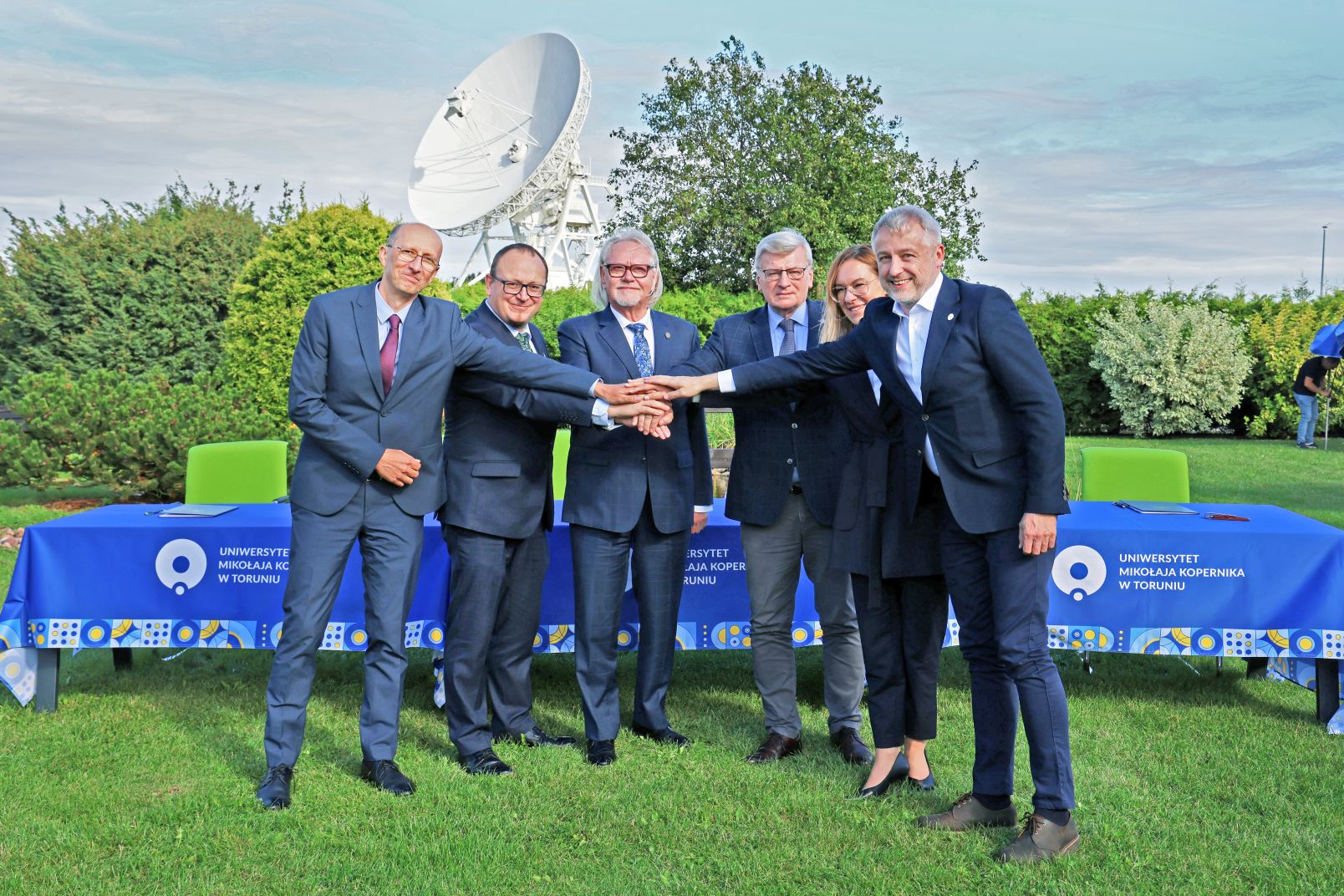
However, the list is not closed – any institution wishing to support efforts towards Poland's accession to the SKAO may join the consortium.
How can our national institutions contribute to the SKA Observatory?
Poland has a rich tradition of radio astronomy dating back to the 1950s. This means that Polish astronomers began systematic observations of the Universe using radio waves at around the same time as the rest of Europe and the world. The first Polish radio telescope was built at the Astronomical Observatory of the Jagiellonian University in Kraków, where several more instruments of this type were later constructed and where intensive radio astronomy research is currently being conducted. Several radio telescopes were also built at the Nicolaus Copernicus University Observatory, which currently has a 32-metre radio telescope, which is an important part of the European VLBI Network (EVN).
It is a medium-sized instrument, the only one of its kind in Central and Eastern Europe. In the future, EVN will be able to conduct joint research projects with the SKAO. In this way, Polish infrastructure will be able to participate in the SKAO scientific projects, explains Prof. Katarzyński.
The same applies to the LOFAR (Low Frequency Array) stations, of which Poland has the largest number after the Netherlands and Germany. They are located in Borówiec near Poznań (Space Research Centre of the Polish Academy of Sciences), Łazy near Kraków (Jagiellonian University in Kraków) and Bałdy near Olsztyn (University of Warmia and Mazury in Olsztyn).
"It will be possible to conduct research within LOFAR jointly with the SKAO, e.g. continuous monitoring of the variability of LOFAR and the SKA-Low objects," adds Prof. Katarzyński.
High hopes and great opportunities
There is no doubt that the SKAO is a unique project on a global scale. At present, there are no radio astronomy research infrastructures that can be compared to what the SKAO is set to become in a few years' time.
The scale, complexity and costs of this project can be compared to the construction of the Large Hadron Collider (LHC), the largest particle accelerator ever built by humankind. The LHC has provided answers to a number of key questions related to the structure of the microcosm, confirmed the existence of the Higgs boson, etc., explains Prof. Katarzyński. "The SKA Observatory is being created to investigate what our universe is, how it was created, where it came from and what its end might be. With its enormous research potential, the SKA Observatory will be the only infrastructure of its kind for decades. The next one will probably be built outside Earth, on the side of the Moon that is invisible from Earth or in outer space, in order to avoid the ever-increasing radio interference.
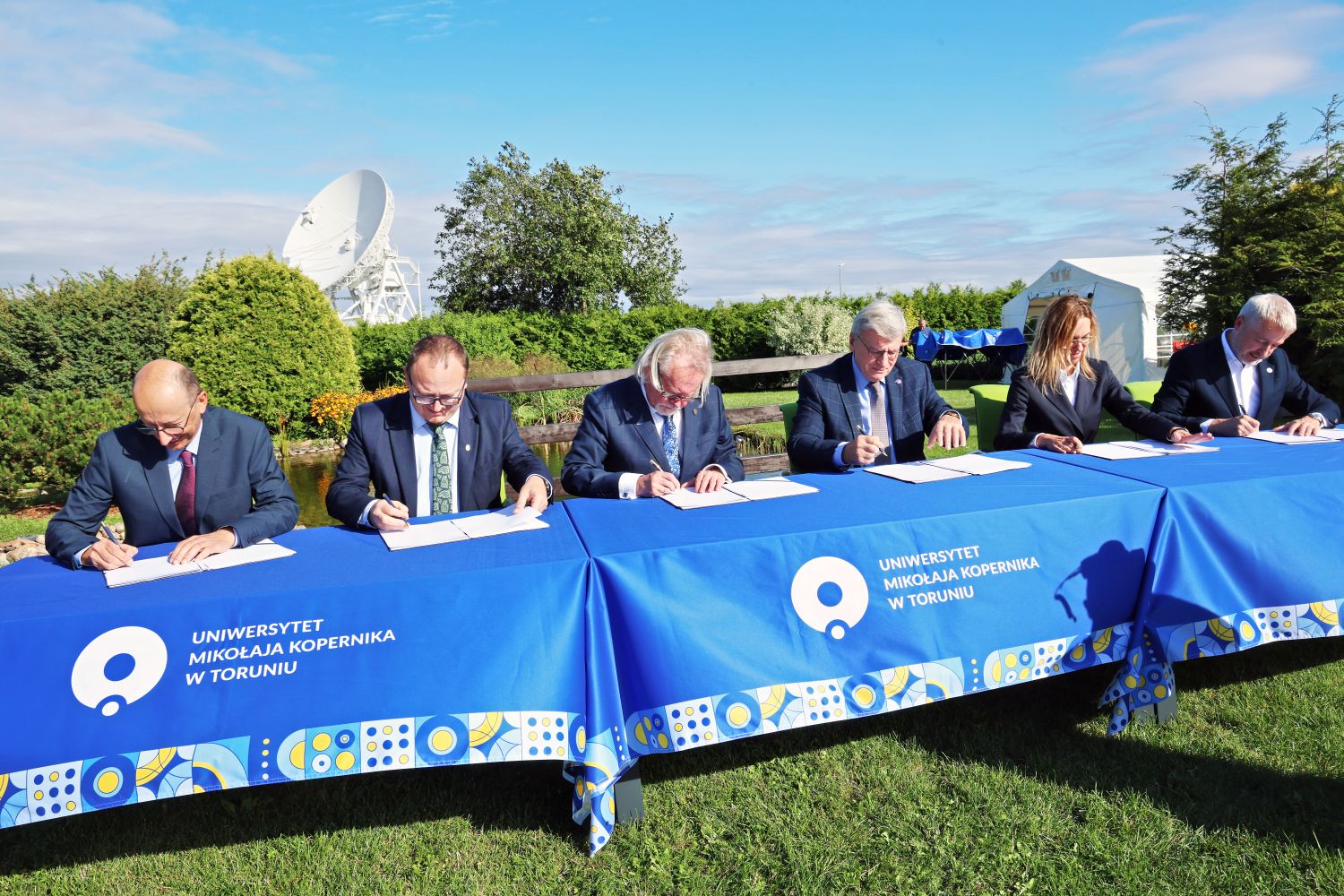 Signatories of the Agreement
Signatories of the Agreement
The document establishing the Polish Consortium for the SKA Observatory (SKAO) project was signed by, from left:
Prof. dr habil. Rafał Moderski, Director of the Nicolaus Copernicus Astronomical Center of the Polish Academy of Sciences,
Prof. dr habil. Wojciech Macyk, Vice-Rector for Research at the Jagiellonian University in Kraków,
Prof. dr habil. Andrzej Tretyn, Rector of the Nicolaus Copernicus University in Toruń,
Prof. dr habil. Zygmunt Lalak, Vice-Rector for Research at the University of Warsaw,
Prof. dr habil. Eng. Justyna Patalas-Maliszewska, Vice-Rector for Research and International Cooperation at the University of Zielona Góra,
Prof. dr habil. Jakub Sawicki, Vice-Rector for Research and International Cooperation at the University of Warmia and Mazury in Olsztyn.
 NCU News
NCU News






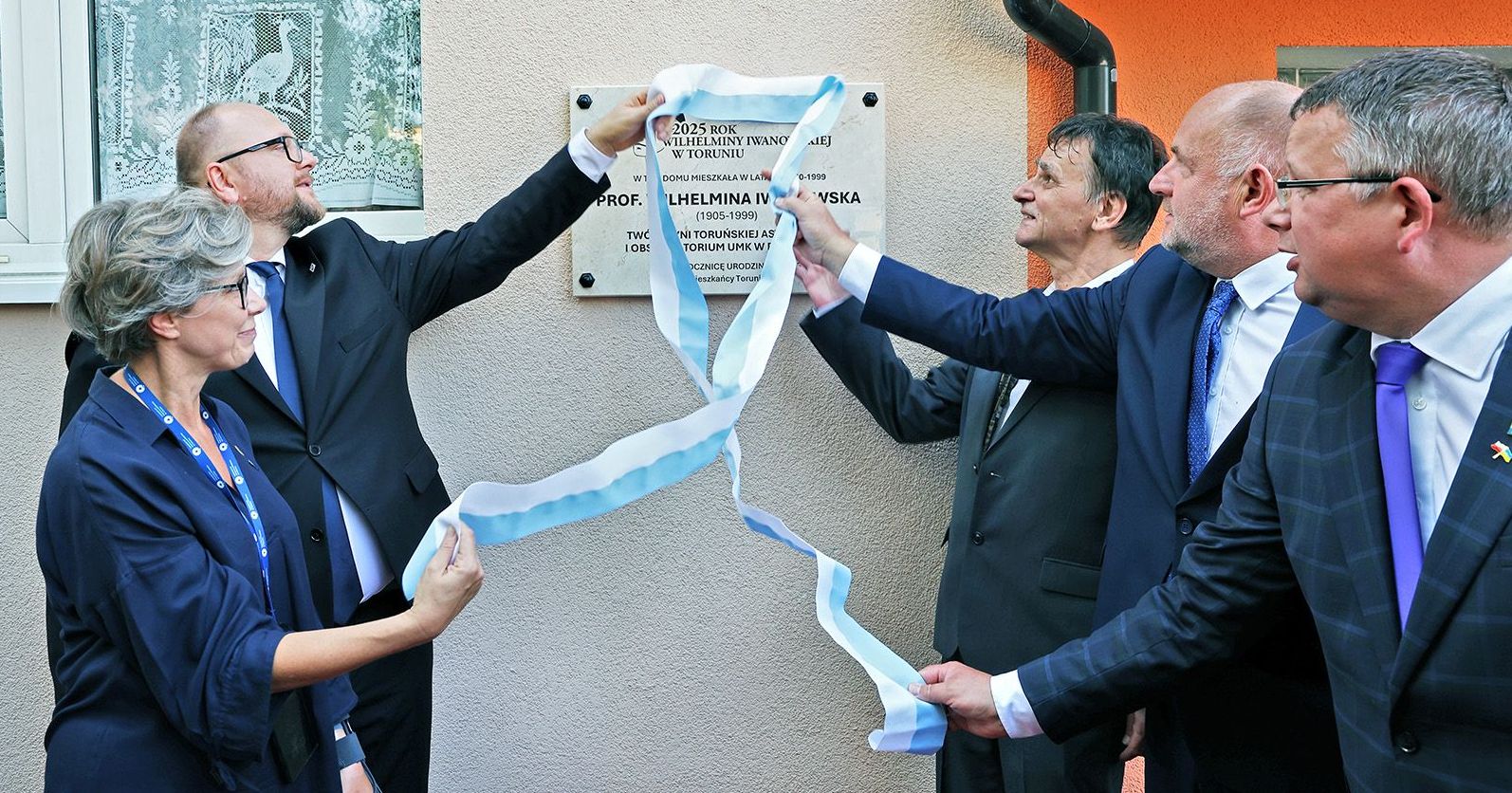 Campus life
Campus life

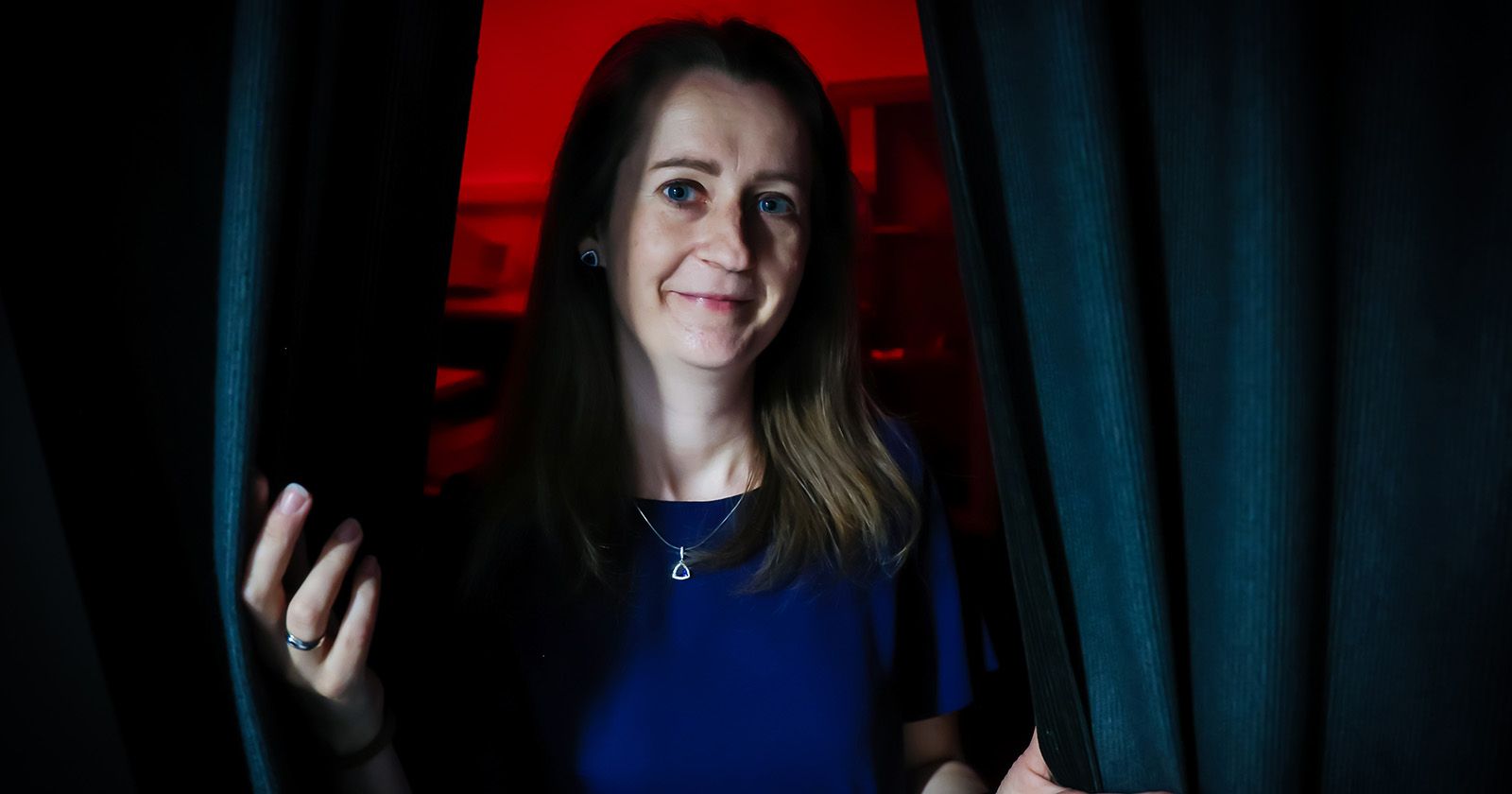 Exact sciences
Exact sciences
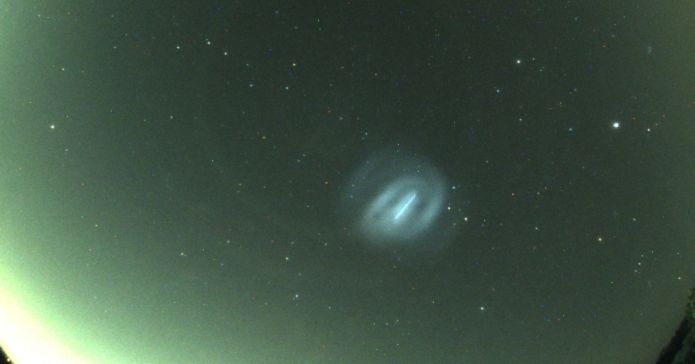 Exact sciences
Exact sciences
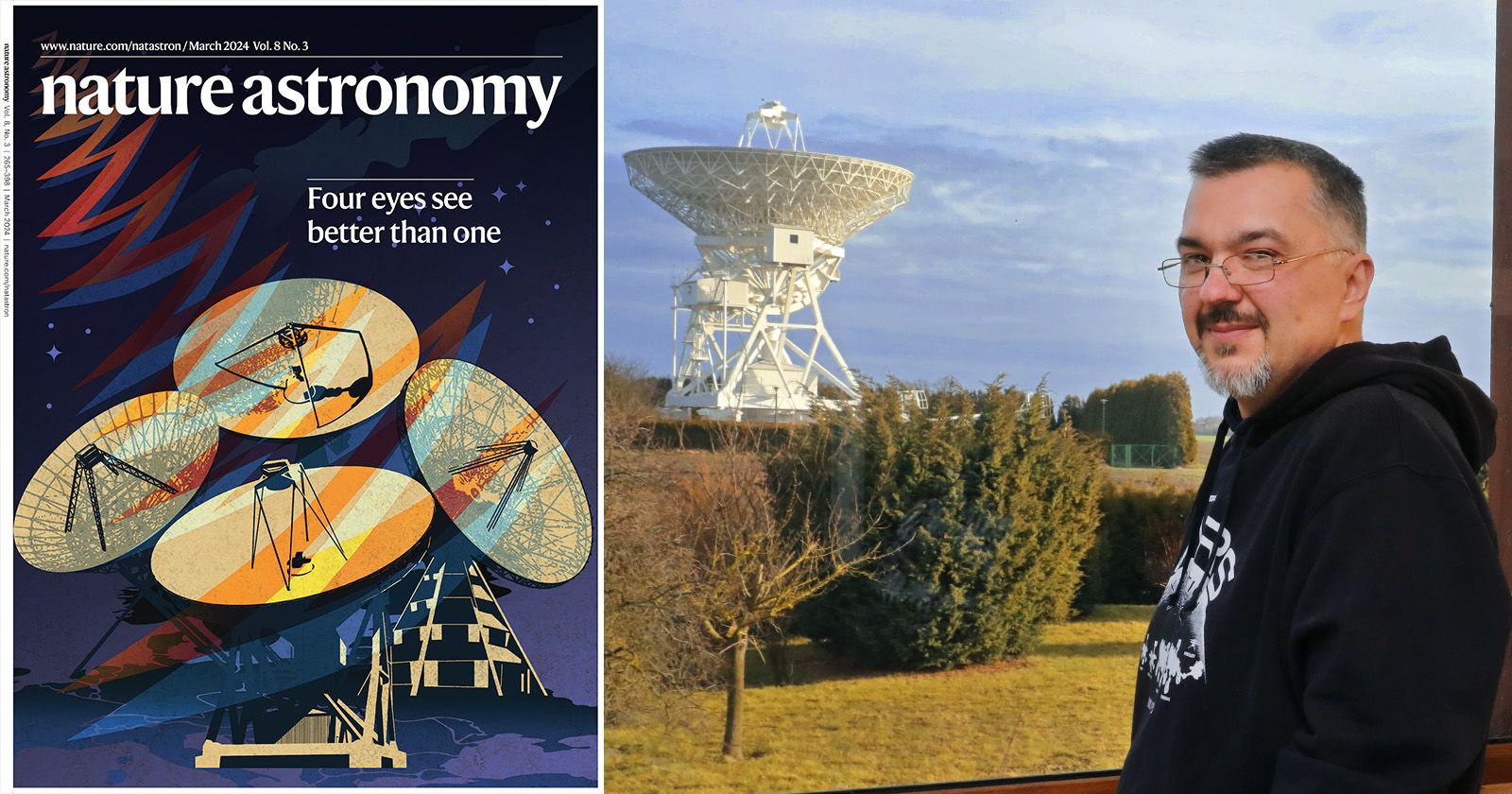 Exact sciences
Exact sciences